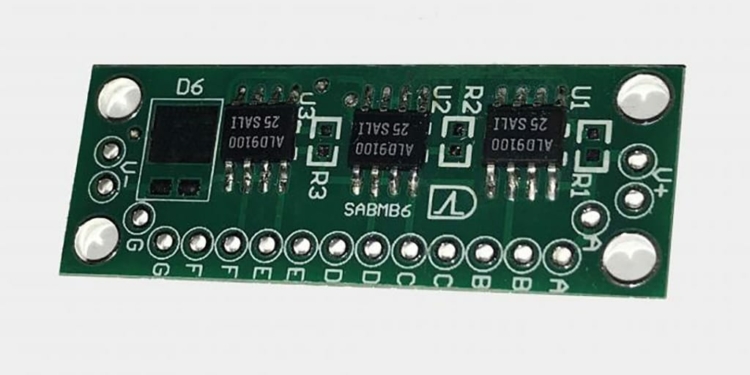Source: Advanced Linear Devices Inc. news
The board offers leakage current balancing for 12 volt (V) systems used in automotive, gap power and remote monitoring applications
SUNNYVALE, Calif. November 14, 2018 – Advanced Linear Devices Inc. (ALD), a design innovation leader in technology, today announced its six-channel supercapacitor automatic balancing (SAB) PCB. The SABMB6 can balance any size of supercapacitor with zero added power dissipation. Each PCB can balance up to six supercapacitors stacked in a series, ranging in size from six to hundreds of supercapacitors with capacities from 0.1 to 3,000 Farads (F) in voltages of 12 and higher. The ultra-low power dissipation enables energy-efficient supercapacitor balancing, which is ideal for applications that require low-loss energy harvesting, long life, and battery backup or replacement.
“Rather than focusing on the DC voltage balancing, the ALD method manages leakage current and is independent of the cell capacitance,” said Robert Chao, President and founder of ALD, Inc. “Leakage current can be affected by many parameters in a supercapacitor, such as operating temperature, aging, initial leakage current input voltage, and the operating bias voltage.”
Targeting 12V battery applications, where six 2V-cells are increasingly used, developers are often required to stack supercapacitors in series or in parallel. The SABMB6 allows up to six connected cells, reducing the risk of a short circuit and battery failure.
Each six-channel PCB is populated with three ALD9100XX SAB MOSFETs that automatically balance the leakage and voltage of each supercapacitor cell connected in series. Optional reverse-biased external clamping power diodes (Schottky rectifiers) can be installed when necessary across each SAB MOSFET to clamp surge current transients. ALD also offers a blank SABMB6 PCB for customers to insert their own SAB MOSFETs.
The product family joins ALD’s existing two- and four-channel SAB PCBs, the SABMB2 and SABMB16, and offers designers lower bill-of-material costs. The boards can be cascaded with mix-and-match configurability to balance multiple series stacks, i.e. combining ALD’s two-, four-, and six-channel PCBs as required. Like other members of the product family, it is a simple, out-of-the-box, plug-and-play PCB solution reducing time-to-market for existing and emerging applications. No electrical engineering expertise or board design is required; the user has only to mount the PCB and wire the appropriate connections from the SABMB6 board to the respective supercapacitor nodes.
The compact SABMB6 PCB is made from RoHS-compliant FR4 material, and measures 0.6 × 1.6 inch (15.24 × 40.64 mm). It is rated for operation at the industrial temperature range of -40 to +85°C. The product can be used for evaluation, prototyping, or production. The product family is in stock at Mouser and Digikey. Prices range from $12.20 to $38.97 each.































